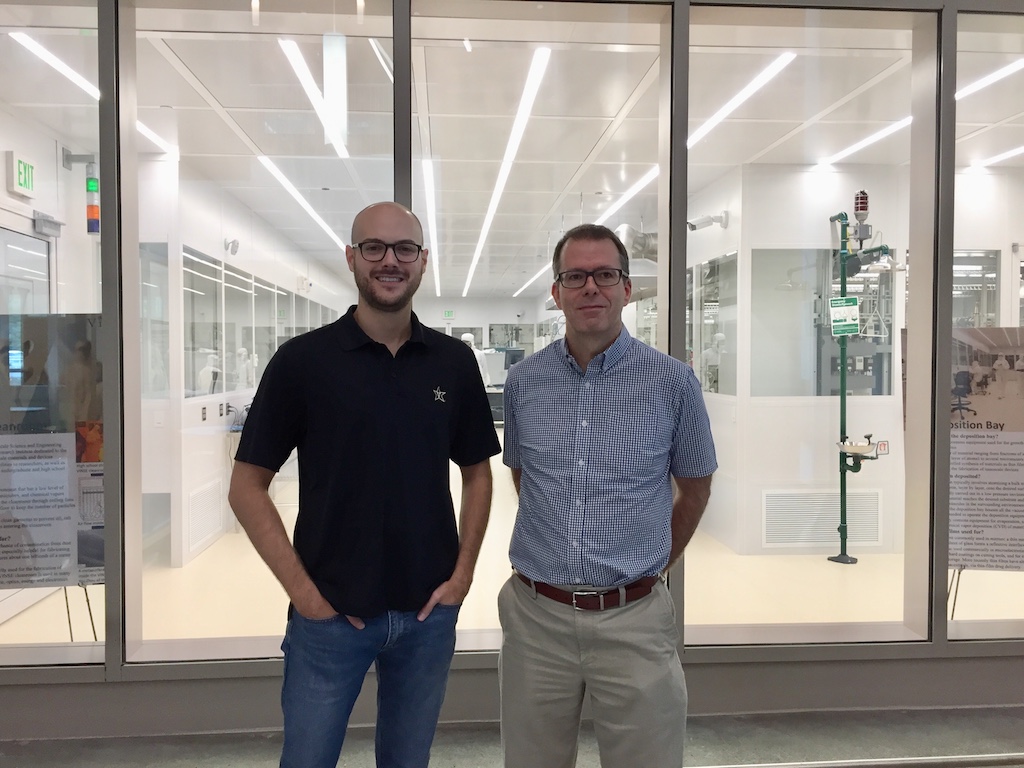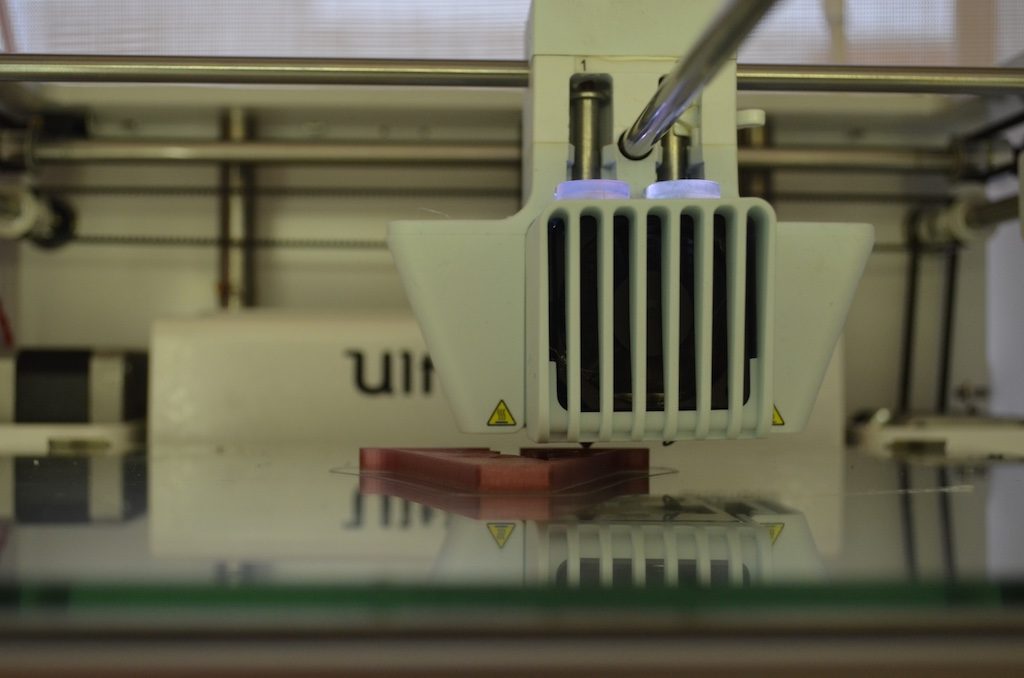Binary Watch #WearableWednesday
From Sverd Industries on Hackster.io:
I’ve always been fascinated by both interesting ways of telling the time and binary code. It’s amazing the amount of information can be stored in simple ON/OFF signals. I knew I wanted a new wrist watch so why not combine binary code with a wrist watch, and do it as an awesome DIY project?
This is the kind of idea that lodged itself in the back of my mind. Always present and constantly evolving until it reached a saturation point where the project had to be done!
There were several challenged that had to solved to make it the watch of my dreams. Most of these challenges can be traced back to the small area of a wrist watch. It would have been easy to make a big or ugly watch, but that’s simply not what I wanted from this project.
I will take you through the process from idea to making your own binary wrist watch you can wear with pride.
Let’s get started!
Read more and see more on YouTube and Thingiverse
 Every Wednesday is Wearable Wednesday here at Adafruit! We’re bringing you the blinkiest, most fashionable, innovative, and useful wearables from around the web and in our own original projects featuring our wearable Arduino-compatible platform, FLORA. Be sure to post up your wearables projects in the forums or send us a link and you might be featured here on Wearable Wednesday!
Every Wednesday is Wearable Wednesday here at Adafruit! We’re bringing you the blinkiest, most fashionable, innovative, and useful wearables from around the web and in our own original projects featuring our wearable Arduino-compatible platform, FLORA. Be sure to post up your wearables projects in the forums or send us a link and you might be featured here on Wearable Wednesday!
CT Scanning Proves to be an Effective Method for Qualifying 3D Printed Parts
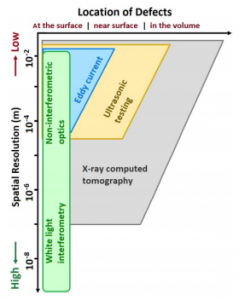 Many things can go wrong with an additively manufactured part, and those things are not always visible. Particularly in powder-based 3D printing, there are several things that can happen during the print that cause issues such as cracking and voids, which may be inside the part and invisible to the eye. There are ways, however, of discovering these defects without having to break apart the part and look inside. In a new paper entitled “The Role of Computed Tomography in Additive Manufacturing,” which you can access here, a group of researchers argue that computed tomography, or CT scanning, is the most effective way of performing quality checks on 3D printed parts.
Many things can go wrong with an additively manufactured part, and those things are not always visible. Particularly in powder-based 3D printing, there are several things that can happen during the print that cause issues such as cracking and voids, which may be inside the part and invisible to the eye. There are ways, however, of discovering these defects without having to break apart the part and look inside. In a new paper entitled “The Role of Computed Tomography in Additive Manufacturing,” which you can access here, a group of researchers argue that computed tomography, or CT scanning, is the most effective way of performing quality checks on 3D printed parts.
Complex parts are especially challenging to inspect for quality purposes, as they can contain internal channels or structures that are prone to voids or inclusions, which are unmelted particles or powder residues. These flaws are difficult for traditional non-destructive testing, or NDT, techniques to fully assess. These techniques include ultrasonic, infrared, eddy current, radiographic inspection, and light-based technologies. Optical methods of defect detection can only detect flaws at the surface or through a surface opening.
“Eddy-current testing and ultrasonic techniques can detect defects within the volume if they are not located very deep inside the testing sample, but the one drawback is the limited spatial resolution of detection, which is in the millimeter range or some fraction of millimeters in the most optimal situations and for even more limited depths into the surface,” the researchers explain.
 The best method for nondestructive inspection of complex geometries inside a part, they argue, is X-ray CT, which has a resolution from millimeter to micrometer ranges, and even sub-micron levels in some cases. In fact, they continue, in many cases it is the only viable option. It can detect cracks, porosity, dimensional deviations from CAD models, and powder residues or inclusions.
The best method for nondestructive inspection of complex geometries inside a part, they argue, is X-ray CT, which has a resolution from millimeter to micrometer ranges, and even sub-micron levels in some cases. In fact, they continue, in many cases it is the only viable option. It can detect cracks, porosity, dimensional deviations from CAD models, and powder residues or inclusions.
“In general, tactile CMMs (coordinate measuring machines) or optical measuring instruments like laser scanners are limited to the measurement of the external surface of an AM part and can provide additional measurements for partial qualification of CT measurements,” the researchers add. “In addition, tactile CMMs can produce compressive stresses and friction during sliding that could produce wear at the surface. In contrast, X-ray CT eliminates the above difficulties because it is a non-contact technique that can access internal features.”
The importance of qualification for additively manufactured parts cannot be overstated. If a part is being used for an aerospace application, for example, it’s absolutely critical that that part is perfect, with no hidden flaws. There are many methods for checking the quality of parts, but most of them come up short in terms of detecting flaws that are hidden deep inside a part. The paper goes on to highlight a case study in which X-ray CT was able to detect minute deviations in dimension from the CAD model to the final part, as well as material inclusions in the internal cavities.
It can be challenging to use CT technology with metal parts, as metal parts can scatter X-rays, disrupting CT reconstructions and producing unwanted artifacts in the data. The solution, the researchers say, is to use a 2D fan beam of X-rays and a linear detector, which can reduce the scattering. Overall, they conclude, CT technology is an effective method of non-destructive testing.
Authors of the paper include Herminso Villaraga-Gómez, Christopher M. Peitsch, Andrew Ramsey and Stuart T. Smith.
Discuss this and other 3D printing topics at 3DPrintBoard.com or share your thoughts below.
Russia: Researchers Examine Porosity Issue in 3D Printing
3D printing opens up infinite new realms of creativity to innovators around the world, whether they are bioprinting or making surgical implants, cars, rocket engine components, or running shoes. Along with all that wonderful opportunity for invention, however, comes pressure. While it is understandable that some objects are still works in progress, most of us want the end product to be as perfect as possible—not only out of self-respect, but also out of respect for a technology just coming into its own in the mainstream, and a need for proper aesthetics, functionality, and productivity.
Now, researchers from the Russian Academy of Sciences have found ways to improve upon 3D printing, outlined in ‘Improvement of quality of 3D printed objects by elimination of microscopic structural defects in fused deposition modeling,’ by Evgeniy G. Gordeev, Alexey S. Galushk, and Valentine P. Ananikov. Porosity issues are a reason for many failures in FDM 3D printing, despite its usefulness in so many different applications, to include medicine, biochemistry, engineering, chemical sciences, and more. Issues with structural weakness and porosity often make the use of FDM 3D printing challenging though, whether just in prototyping or other manufacturing processes.
In assessing FDM 3D printing, the research team used materials such as PLA, ABS, PETG, PP, Nylon (polyamide), and carbon-filled Nylon while they examined the following:
- Filament feed rate
- Wall geometry
- G-code defined wall structure

(A) cylindrical test tube, (B) hollow entity of cubical shape, (C) spherical flask. In the top view, arrows indicate outgassing.
As they optimized feed rate and structure, the researchers were able to significantly improve 3D printing quality—even with more basic hardware and materials. In evaluating, they printed with a Picaso 250 Designer Pro (PICASO 3D) with a 0.3 mm diameter nozzle, creating objects like cylinders, cones, spheres, pyramids, and cubes—all of which they performed numerous experiments on.
“It turned out that under standard conditions cylindrical objects had the minimum number of pores and the best quality of 3D printing,” stated the researchers. “Conical objects had larger pores uniformly distributed over the surface. For a spherical shape, the largest number of pores was observed in the region of poles lying on the axis perpendicular to the planes of the layers, while the equatorial region retained impermeability.”
“A combination of cylindrical and conical shapes in one object resulted in a uniform distribution of a small number of pores in the wall of the cylindrical portion, and a much larger number of pores in the conical portion. In plane-faced products (e.g. hexagonal pyramid and cube), the most porous areas were found at the edges, that was, in the neighborhood of the joints between the faces. The observed dependence of porosity on the geometric shape or its specific area is explained by the corresponding differences in the mode of layer positioning: in cubical and cylindrical products, the layers are arranged exactly one above the other, so the interlayer contact is most effective. In conical products, the layers are arranged with a certain offset, that is, stepwise, which makes the interlayer contact less effective.”

Functional assessment of 3D printing quality for objects of different shapes.
All objects are printed with identical parameters at k = 0.9 from PLA: (A) cylinder, (B) cone, (C) sphere, (D) compound shape, (E) pyramid, (F) cube. The diagrams below show the distribution/densities of the pores. Red areas have maximal porosity/permeability; green areas are relatively impermeable; blue color designates junctions with the air compressor.
The team states that they found ‘edges and vertices’ to have more defects than other shapes in the experiments.
“Among the shapes with smooth outlines, conical and spherical elements of irregular curvature are most vulnerable, whereas flat and cylindrical surface areas are most resistant to the pore formation,” stated the researchers.
The researchers also discovered that thin-walled objects became ‘untenable’ in terms of sealant. Reversing this with thicker walls allowed for less pores and better success in 3D printing:
“Thus, to minimize the porosity, the proper filling of the inner space should be additionally controlled by verification of the G-code suggested by the slicer software. The more homogeneous the intermediate layer of the wall is, the more impermeable the wall of the product will be, since all the seams will be securely insulated from each other.”
Permeability was shown to be greatly affected by the following conditions:
- Extrusion multiplier
- Wall thickness
- Internal filling
- Temperature
- Materials
- Shape
“The product properties can be affected by the feeder construction, presence/absence of a closed case, heating mode of the working platform, extruder cooling system, etc.,” concluded the researchers. “Despite that, with proper optimization of printing conditions, commercial desktop 3D printers can be suitable for the production of sealed containers for various applications. The proposed quality assessment procedure allows the gradual improvement of the quality of 3D printed objects by elimination of structural defects.”
Find out more about the research conducted at the Russian Academy of Sciences here.

PP tubes as chemical reaction vessels in comparison with conventional glass test tubes. Values of k are given below for each 3D-printed tube. Performance in the studied chemical transformation is illustrated by product yield (in %) in each studied case, where ≥ 90% efficiency corresponds to excellent performance.
What do you think of this news? Let us know your thoughts! Join the discussion of this and other 3D printing topics at 3DPrintBoard.com.
Maryland Researchers 3D Print Middle Ear Prostheses
While printing finds itself in wide use among the medical prosthesis community, there are certain organs that are fairly elusive. Although 3D printing offers precise control over minute details, there are always worries about part quality and precision. Parts like the ear, particularly for sufferers of hearing loss, can be intricate pieces to produce as […]
The post Maryland Researchers 3D Print Middle Ear Prostheses appeared first on 3D Printing.
Unpacking America’s downloadable 3D printed guns
REVIEW: The 3DGence INDUSTRY F340, a powerful PEEK 3D printing workhorse
Mathematics Jewelry Uses and Patents I-Beam based Jewels
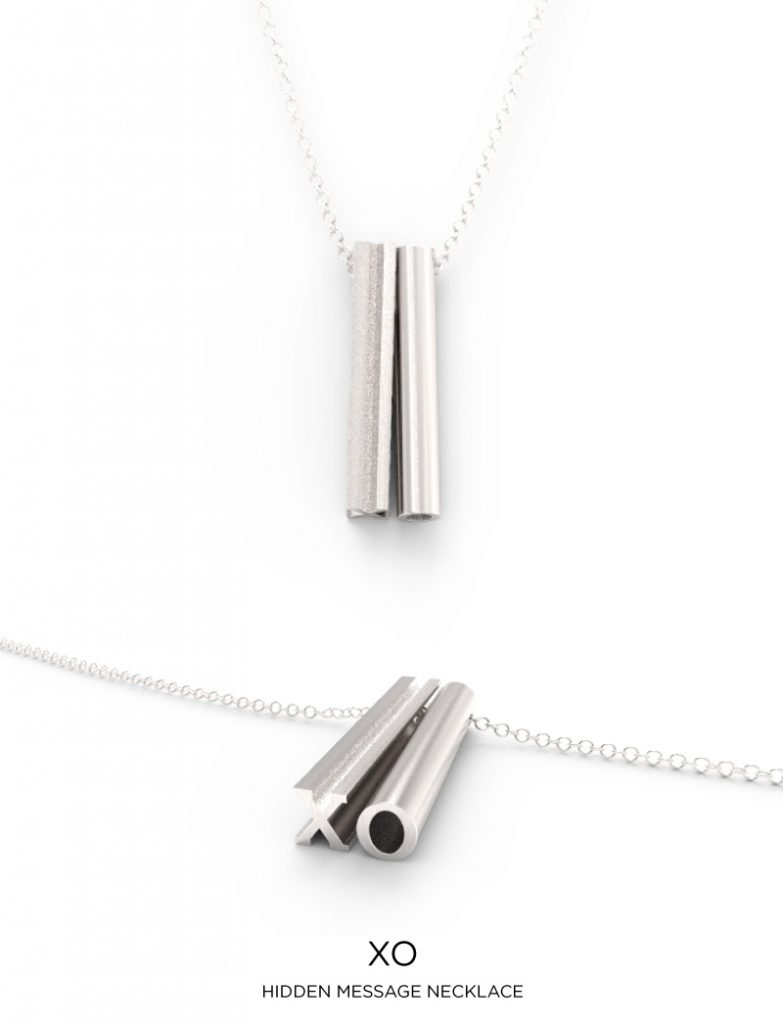
New York based couple structural engineer Beth Macri and software engineer Jason Macri have started a jewlery business together. The tech duo was inspired through trying to use 3D printing to create unique jewlery for a friend. An I-Beam served as the inspiration for an architectural piece of jewlery that shows you the name of the wearer from another angle. The I-Beam jewlery is actually extruded letters and one can choose one to match your jewel. Their jewlery brand is called Mathematics and it is made through 3D Printing and lost wax casting. 3DPrint.com interviewed Beth to see how her jewlery brand came about.
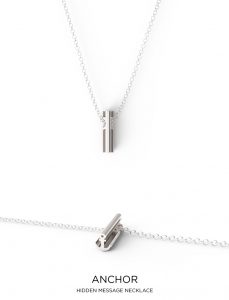
I went back to school for parametric arch and fell in love with 3D printing technology. I wanted to use this technology on a smaller scale and started to think of jewelry concepts that couldn’t be achieved without the 3D printing technology. Initially I was working on generative algorithm jewelry, however a friend of mine was having a baby and I wanted to make a unique letter necklace to commemorate the occasion.
The I-Beam was a part of my subconscious after my years of working as a structural engineer doing high end architecture.
There really isn’t a target audience as we have customers ranging from college students to Fortune 500 CEO’s. Each necklace has a different style and a different meaning so it can tell the story for just about anymore.
The name was recently changed from Beth Macri to Mathematics, as Mathematics is a ubiquitous word and we want our jewelry to be ubiquitous.
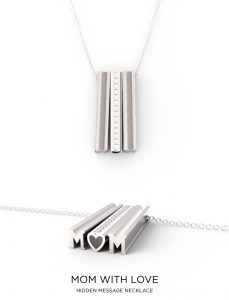
I didn’t develop the software, for my product I use basic Rhino modeling techniques and work alongside our local casting house that is using the latest in 3D printing technologies in jewelry.
I am not worried about up and coming jewelry designers for two reasons. We have a patented product, so we are the only ones who can create these necklace. But we are also friends with many designers from our industry, and welcome more to our world; it’s empowering and fulfilling to work alongside so many other unique and wonderful designers.

The Mathematics Founders Beth and Jason Macri
It’s been a game changer. I wouldn’t be in business if it wasn’t for this technology. This technology pushes the boundary of what can be done in the jewelry industry.
Our jewelry is the antithesis of sharing yourself with the rest of the world; it’s whatever you want it to be but it’s also private and personal to the wearer. We think this is a nice reprieve from oversharing with the rest society.
The most interesting thing about Mathematics jewelry was that the couple state that they patented the jewels. This is quite remarkable considering how much prior art there is in using extruded letters. A design grant was given to Beth Macri in 2015 for extruded letters that are in the form of a beam. One part of me is simply flabbergasted that as late as a few years ago someone had not registered this. Another part of me doesn’t like being restricted in the form that I can create. What do you think?
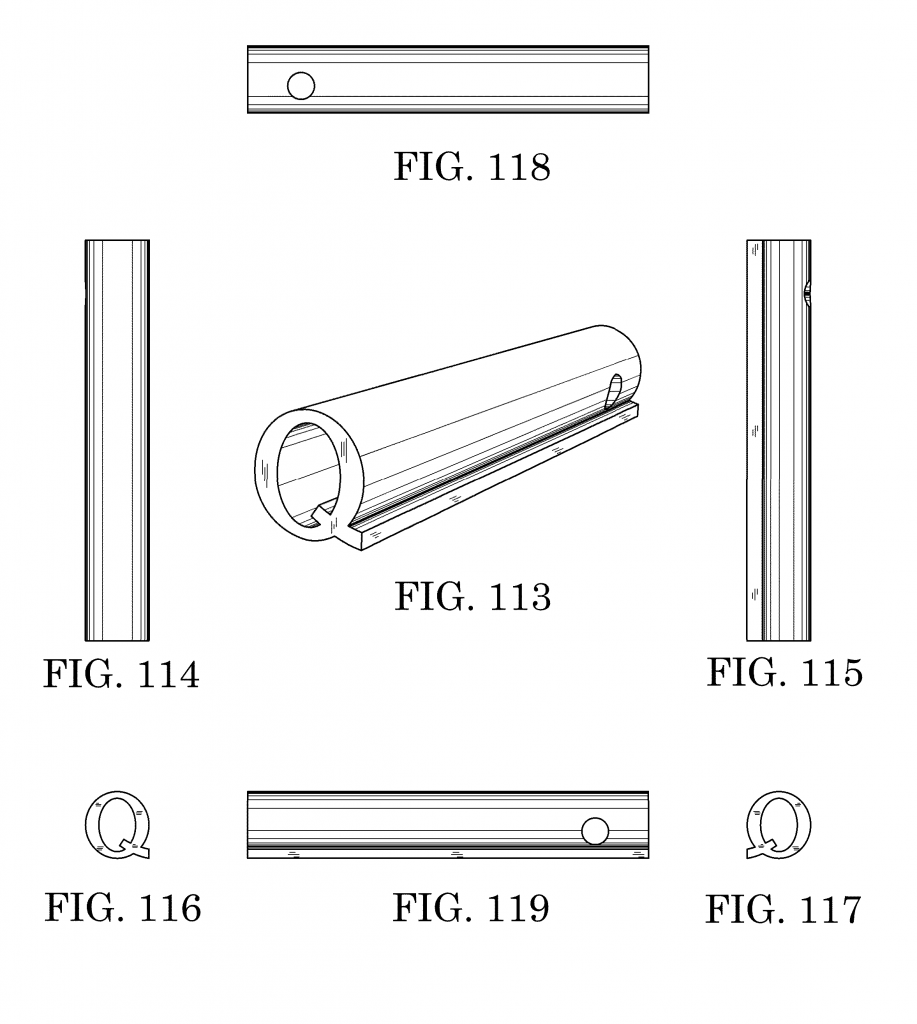
3D Printed Guns: Bad People can go on Instagram and get an Instagun
Lawmakers speak out against 3D printed guns with Senator Richard Blumenthal saying that “these ghost guns are the new wave of American gun violence.” Senator Edward Markey says that “Donald Trump would be responsible for every 3D Printed AR 15 roaming the streets of our country.” Also, he stated, “Beginning tonight at 12:01 AM, bad people can go on Instagram and get an Instagun.” ChuckSchumerr also says that the administration is “enslaved by the NRA.” One gets the impression that these guys are worried about “The Purge.”
We’ve gone from being a $12 billion High tech industry growing at a 30% clip, saving children, repairing pets, providing jobs and being the future of all the things to now being a political football. I’ve worried about this before but this 3D printed gun backlash is actually happening. Lets recap for a moment. We’ve spoken about this topic before and are caught between bringing realism to 3D printed guns and popularizing this even more.
It has always been legal in the United States to make your own homebrew guns 3D printed, or made with whatever the technology. Ghost guns could always be made and 3D printed ghost guns could have been made for 30 years now. What so far over the past 30 years have been the cases when 3D printed ghost guns have been used for crime? What percentage of gun crimes is committed by homemade ghost guns?
Making DIY guns at home has been legal for decades. If you want to sell your gun, then you have to apply to become a gun manufacturer or distributor and your gun has to have a serial number. A group of people looking for controversy did not do this. They were invited on all the talk shows and got more money to 3D print their guns. The 3D printed gun was one guy’s idea but the media attention made it a reality. It is therefore their fault once someone gets killed. By making this a self-fulfilling prophecy and popularizing it they are making it a reality. Meanwhile, the group that first 3D printed guns is using CNC machines to make guns.

Instagun t-Shirt.
A lawsuit gets settled and immediately lawmakers spring into action to defend us from 3D printed guns. The entire media sees this as a new threat. Do none of them realise that ghost guns or 3D printed guns could have been possible for decades?
Meanwhile in these decades have crimes been committed with them? Nope. Criminals have enough guns already and can get them via traditional means. Also, other methods of manufacturing are better than 3D printing for this application.
So now lawmakers are going to spring into action to? Let me guess: implement DRM for 3D Printing as a solution. The result is that we will get separate more restrictive laws for 3D printing in the United States than for other manufacturing technologies. This can only hamper and restrict 3D printing in the United States. By demonizing 3D printing US politicians have undergone a collective failure to think things through today. We had similar freakouts in Australia and other countries before leading to bans of 3D guns but this one may have consequences unlike other things with ghost guns that just blew over.
The US is one of the leading countries in 3D printing and stands to benefit significantly from it. The US government has spent many millions over the years commercializing several 3D printing technologies that are being used for satellites, aircraft, automobiles, medical applications and in industry. With more legislation aimed just at curtailing 3D printing the US risks undoing its earlier efforts. 3D Printing is being put at a disadvantage when compared to other technologies. The US may through this hoopla harm and even retard its growth in 3D printing. US technological leadership will crumble if the US 3D printing industry is hindered uniquely.
By popularizing this issue 3D printing is coming in a negative light. Rather than putting 3D Printers in classrooms, questions will be asked and kids will get less access to 3D printers. US printers will be more expensive and less capable than others because they will need to have DRM. What’s more DRM will not be a workable solution for companies making secret things and new inventions. These companies, therefore, will no longer buy US 3D printers. Any move towards DRM for 3D printing will do irreparable harm to the US portion of the 3D printing industry while other countries will use this to their advantage.
FDM, SLA, Powder bed fusion and BinderJet are US inventions. The US has done a lot of the heavy lifting to commercialize 3D printing and relies on it for next-generation aircraft and other technologies. Now through one week of media fear mongering the US could put itself out of the 3D printing race. Short-term political goals are being placed ahead of the long-term strategic goals of the country.
Could people use the internet to exchange gun plans? Could people use the internet to plot crime? Of course, they could. But, in retrospect, the fear could be real but I think on the whole its been good for the US to have lead the way in building and rolling out the internet globally. Many billions of good.
Now an impactful technology is being smothered and restricted, in the US alone because of lobbyists and collusion. Some big content company wants DRM to restrict 3D printing. Why because we’ll print out their little puppets? Nope, because they’re afraid we’ll print out our own creations. Other politicians want to fan the flames of a problem that they will then “solve.” No one solves anything but oh it is a beautiful democracy theater for us to watch. Being so close to this thing, caring and knowing how it really works makes me worry about how they decide all the other things that I don’t know about.


